Community Tip - You can subscribe to a forum, label or individual post and receive email notifications when someone posts a new topic or reply. Learn more! X
- Community
- Creo (Previous to May 2018)
- Creo Modeling Questions
- Is there a way to show thread on model surfaces in...
- Subscribe to RSS Feed
- Mark Topic as New
- Mark Topic as Read
- Float this Topic for Current User
- Bookmark
- Subscribe
- Mute
- Printer Friendly Page
Is there a way to show thread on model surfaces in case I use shaded with edges model display?
- Mark as New
- Bookmark
- Subscribe
- Mute
- Subscribe to RSS Feed
- Permalink
- Notify Moderator
Is there a way to show thread on model surfaces in case I use shaded with edges model display?
Hello, everyone.
Is there a way to show thread on model surfaces in case I use shaded with edges model display?
I didn't have this kind of problem in other CAD systems like SolidWorks or Inventor.
But now I have to switch from shaded with edges model display to wireframe or hidden line model display every time I need to see thread on model surfaces.
Best regards, Vladimir.
Solved! Go to Solution.
Accepted Solutions
- Mark as New
- Bookmark
- Subscribe
- Mute
- Subscribe to RSS Feed
- Permalink
- Notify Moderator
You're saying that you can see threads in Wireframe mode, but not in Shaded mode, correct? If you modeled true threads then you can see them in any mode, but if you created Cosmetic threads, which is a cylindrical surface that will show as hidden lines in a drawing to reprsent threads, or a Hole feature then threads will not show in Shaded mode.
If you want to see threads in Shaded mode, you'll have to model threads or use a special color or "texture" to represent threads.
- Mark as New
- Bookmark
- Subscribe
- Mute
- Subscribe to RSS Feed
- Permalink
- Notify Moderator
You're saying that you can see threads in Wireframe mode, but not in Shaded mode, correct? If you modeled true threads then you can see them in any mode, but if you created Cosmetic threads, which is a cylindrical surface that will show as hidden lines in a drawing to reprsent threads, or a Hole feature then threads will not show in Shaded mode.
If you want to see threads in Shaded mode, you'll have to model threads or use a special color or "texture" to represent threads.
- Mark as New
- Bookmark
- Subscribe
- Mute
- Subscribe to RSS Feed
- Permalink
- Notify Moderator
Thank you very much for your answer, Kevin.
I like the idea to use special colour for surfaces with threads.
Best regards, Vladimir.
- Mark as New
- Bookmark
- Subscribe
- Mute
- Subscribe to RSS Feed
- Permalink
- Notify Moderator
My pleasure.
Out of curiosity, are your threads Cosmetic threads?
- Mark as New
- Bookmark
- Subscribe
- Mute
- Subscribe to RSS Feed
- Permalink
- Notify Moderator
Yes, they are. You can see the model below in attached files. I used yellow colour for surfaces with threads in a shaded mode according to your advice .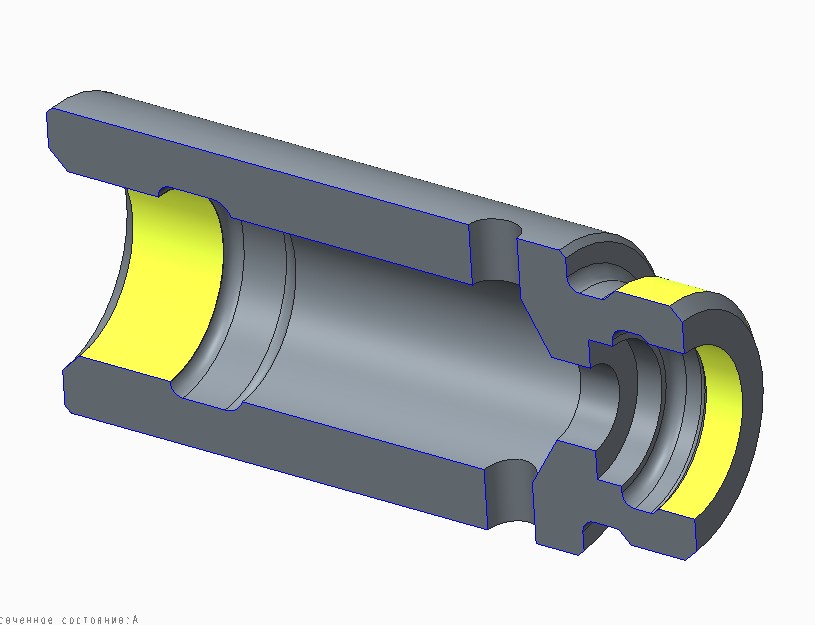
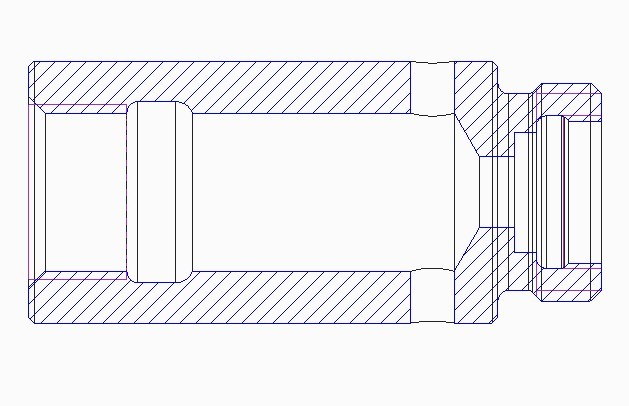
- Mark as New
- Bookmark
- Subscribe
- Mute
- Subscribe to RSS Feed
- Permalink
- Notify Moderator
You could also, for greater effect, make the yellow (or other) color transparent so you could see the thread surface itself underneath and add depth to it. I'd post a pic but for some dumb reason I can;t get my cosmetic threads to show to save my life now. Sonething's goofy with my system.....
- Mark as New
- Bookmark
- Subscribe
- Mute
- Subscribe to RSS Feed
- Permalink
- Notify Moderator
Today I used a special texture for a surface with thread according to Kevin's advice. Actually, I copy this texture from SolidWorks. It is a picture in JPEG format, which is called "thread". The result is perfect, but there is one problem. Using this technique you can create just a full length thread. But I need to put thread just on a definite length. Is there a way to do it ?
I attached pictures with my model.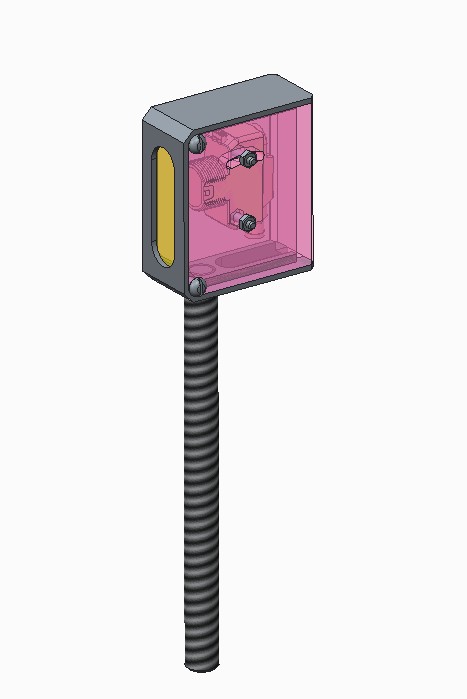
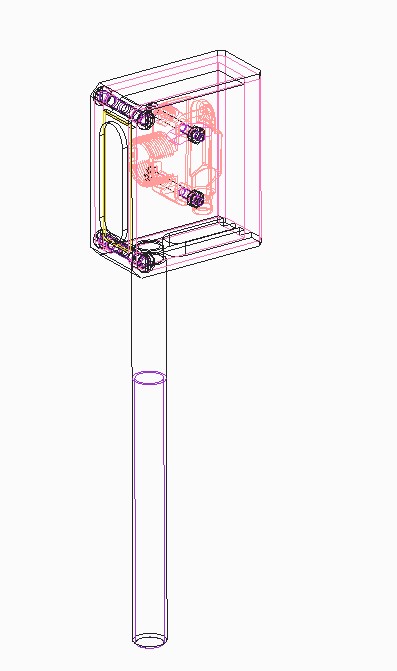
- Mark as New
- Bookmark
- Subscribe
- Mute
- Subscribe to RSS Feed
- Permalink
- Notify Moderator
Offset a surface the desired length by .001, and apply the texture to that. Honestly, for what you're trying to do here, I'd model an actual ACME thread (if that's the look you're trying for).
- Mark as New
- Bookmark
- Subscribe
- Mute
- Subscribe to RSS Feed
- Permalink
- Notify Moderator
I agree with Frank on both suggestions.
Try this sweep method for making the threads, click here, I like it best. You can do a helical sweep, though. Frank can tell you how.
- Mark as New
- Bookmark
- Subscribe
- Mute
- Subscribe to RSS Feed
- Permalink
- Notify Moderator
Hi Vladimir...
Did Frank's suggestion work? He's basically telling you how to divide the surface into two separate pieces so you can apply the texture to only a portion of your shaft.
Cutting an actual thread is pretty easy using the technique Kevin suggested... of course I prefer a helical cut. If you want to try it, I volunteer Frank to demonstrate. ![]() (Or if he's being grouchy I'll show you).
(Or if he's being grouchy I'll show you).
Have a good weekend!
-Brian
- Mark as New
- Bookmark
- Subscribe
- Mute
- Subscribe to RSS Feed
- Permalink
- Notify Moderator
Good morning!
Frank, Kevin, Brian, thank you very much for you help.
I managed to create threads which I want to by using each of your techniques.
I found out that using an actual thread for a standard metric thread makes your drawings too dark and complicated.
In these situations it is better to create a cosmetic thread and put a texture on a surface.
But for special threads making an actual thread is perfect.
Best regards, Vladimir.

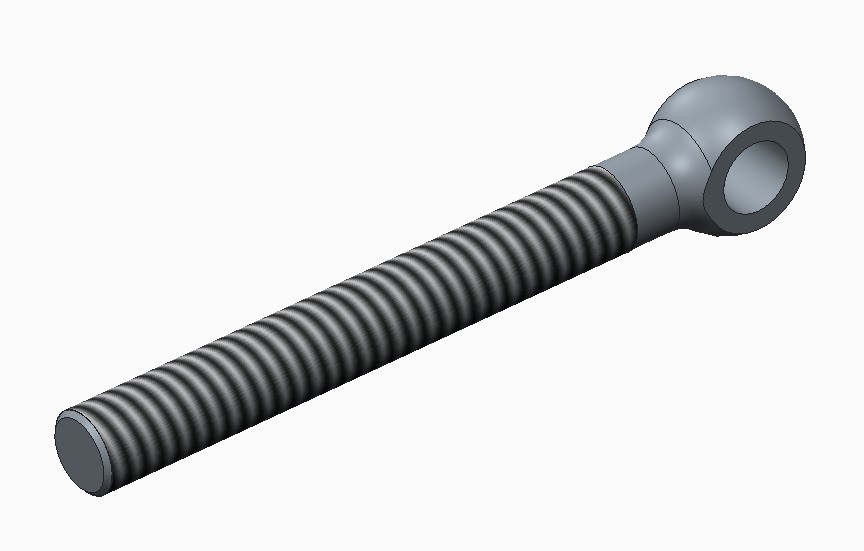

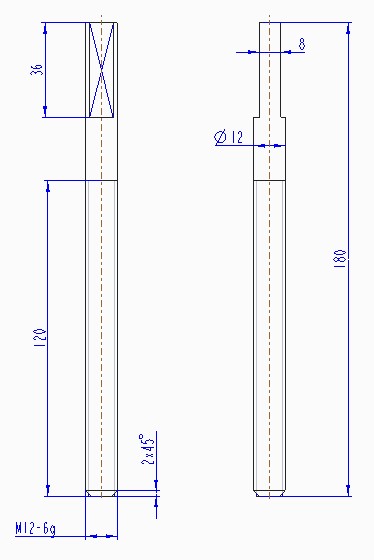
- Mark as New
- Bookmark
- Subscribe
- Mute
- Subscribe to RSS Feed
- Permalink
- Notify Moderator
Thanks for the feedback. I'm glad to hear the results of a problem once it's solved.
- Mark as New
- Bookmark
- Subscribe
- Mute
- Subscribe to RSS Feed
- Permalink
- Notify Moderator
Vlad, you can stop the cosmetic thread at the conical surface of the chamfer. Also, to make the threads show up best in the dwg, make sure your dwg setup file (".dtl") has the setting: "thread_standard" set to: "std_ansi_imp_assy".
- Mark as New
- Bookmark
- Subscribe
- Mute
- Subscribe to RSS Feed
- Permalink
- Notify Moderator
Hi Vladimir...
Most people use the cosmetic threads unless there's some critical need for actual threads. Cosmetic threads are much "lighter" and require less processing power to regenerate. Definitely stop the threads at the chamfer as Frank suggested.
Good luck!
-Brian
- Mark as New
- Bookmark
- Subscribe
- Mute
- Subscribe to RSS Feed
- Permalink
- Notify Moderator
Good mornig!
Frank, Brian, thanks a lot for your help.
I improved my drawings according to your advice.
I had to make an offset datum plane to define a start plane for a thread so it doesn't intersect the conical surface of the chamfer. That's an interesting fact, because some CAD systems trim the surface of the cosmetic thread automatically when you make a chamfer on the edge. Also I chose JIS standard for thread instead of ANSI standard as it is closer to our standard.

In any case my drawing looks far better now thanks to you.
I highly appreciate your help.
Best regards, Vladimir.
- Mark as New
- Bookmark
- Subscribe
- Mute
- Subscribe to RSS Feed
- Permalink
- Notify Moderator
Oh how I miss SW cosmetic threads....
- Mark as New
- Bookmark
- Subscribe
- Mute
- Subscribe to RSS Feed
- Permalink
- Notify Moderator
So do I ...
- Mark as New
- Bookmark
- Subscribe
- Mute
- Subscribe to RSS Feed
- Permalink
- Notify Moderator

